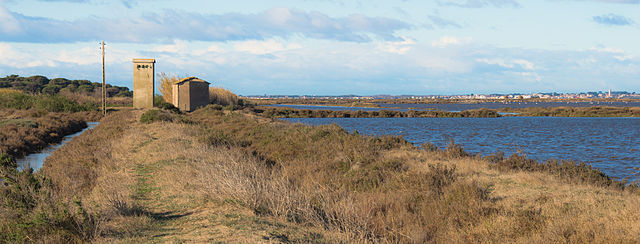Pumping stations, also called pumphouses, are public utility buildings containing pumps and equipment for pumping fluids from one place to another. They are critical in a variety of infrastructure systems, such as water supply, drainage of low-lying land, canals and removal of sewage to processing sites. A pumping station is an integral part of a pumped-storage hydroelectricity installation.
Pumping station Van Sasse in Grave, Netherlands.
Pumping station Van Sasse in Grave, the Netherlands.
New Orleans, Louisiana: Metairie Pumping Station, also known as Pumping Station 6, building, constructed in 1899, near Metairie Road and the head of the 17th Street Canal. Now housing 15 Wood Screw Pumps, it can move over 6 billion US gallons (23,000,000 m3) of water a day.[citation needed]
A land drainage pumping station in Sète, France.
A public utility building is a building used by a public utility to maintain its office or to house equipment used in connection to the public utility. Examples include pumping stations, gas regulation stations, and other buildings that house infrastructure components and equipment of water purification systems, water distribution networks, sewage treatment systems, electric power distribution, district heating, telephone exchanges, and public service telecommunication equipment.
Foundational waterworks style of Springhead Pumping Station
Sacred atmosphere imposed by the design of Abbey Mills Pumping Station
Combined sewer overflow screening facility disguised as townhouses, built in 2009
West Campus Combined Utility Plant at the University of Chicago








